
Introduction
Games systems are magical things, and part of that is that there is almost always a unique feel, style or even aura that emanates from them. It’s that feeling that lends itself to the nostalgia we feel when we revisit the games of our youth.
Sega are famous for their “blue sky” look and feel, a defining spirit which permeates not just through their home consoles, but their arcade games too. This is particularly true of Sega’s later major consoles, the Saturn and Dreamcast, two systems widely, and sadly, considered failures by the wider gaming community due to their commercial performance.
But both the Saturn and Dreamcast deserve your attention. Common misconceptions and narratives based on sales hide the fact that both of Sega’s later consoles bellied some of their finest, most creative and most innovative work. The quality of these libraries is sky high and the games are quintessentially Sega, with that trademark blue sky look and feel to them.
Make no mistake, for those who invested time into the Saturn or Dreamcast, they were rewarded with some of the finest gaming experiences of their respective era’s, as Sega’s development teams explored the possibilities of early 3D games, perfected the realm of 2D and brought with them the panache that Sega was famous for.
But which console represented Sega at their best, their most creative and was the zeitgeist of that distinctive style and spirit that they were renowned for?
Self-confessed Dreamcast addict James McGhie and Saturn romanticist Dan Driver debate which console beheld Sega at their peak.
Opening Arguments

Dreamcast (James)
The Dreamcast.
A console that over the years has had so many superlatives written about it that it has become royalty within the retro gaming community.
Transcending the decades, it has evolved into a cult icon, revered more in death than it ever was in life, becoming the proverbial Jesus Christ of retro gaming; a prophet, a pioneer, the son who sacrificed himself so that gaming could continue to grow and evolve via the ideas it implemented too soon for too many to appreciate.
This was the system that was going to right the wrongs for SEGA, turn the tide and restore the Japanese giant back to its former glory after the debacle of the SEGA CD and 32X left consumers mistrustful of the company who dominated the 16 bit era in Europe and North America.
And while I’m on the Dreamcast “side of the fence” in this piece, make no mistake that in my opinion the Saturn is harshly treated by history also, unfairly lumped in alongside the two aforementioned “flops”.
Yes, the Saturn did have its failings, and yes it had a botched launch and a price tag that instantly set it back against the then newcomer in Sony’s PlayStation.
However, the Saturn was home to some incredible arcade ports which, unlike the Dreamcast, it really had no right to be running at all.
While the mainstream eventually flocked to Sony’s first system to the Saturn’s detriment and the PlayStation 2 hype machine gobbled up potential Dreamcast sales before a single piece of hardware had even hit the shelves, gamers who did put their faith and money in SEGA enjoyed some of the most original, innovative, and fun titles of the era.
The Dreamcast was the first console I not only bought on my own, but imported. And while my love for SEGA started in the arcade and would grow on the Saturn, it cannot be underestimated and understated how huge a step up the Dreamcast was.
While arcade ports on the Saturn were superb fun, unfortunately for every Virtua Fighter 2 there was a House of the Dead and for every SEGA Rally there was a SEGA Touring Car.
The podcasts that accompany this piece will delve into further detail about my first experience with the Dreamcast, because words on a screen cannot convey the shock and awe of that encounter.
In a nutshell, the Dreamcast was the first time I felt that the arcade had truly come home without compromise, although there are a handful of exceptions (SEGA Rally 2) and missed opportunities (SCUD Race and Daytona USA 2 spring to mind). SEGA openly admitted that they didn’t want Dreamcast to be stigmatised by arcade ports, another sign of SEGA’s more “mainstream” approach when compared to the Saturn.
There was however a loosening of the shackles as Dreamcast’s short life went on and we would see some truly original and innovative titles that hark back to that “blue sky” feeling Dan spoke of.
The real travesty for me though is that while the Saturn got to flex its muscles and show us what it was truly capable of when placed in the right hands, we’ll never know just how good the Dreamcast truly was.
It was never pushed to its limit, developers didn’t get to know the system and learn how to tweak more performance from it through the years. For as good as the memories the Dreamcast gave us are, we will never get to experience the system at its full potential. Saturn owners, at least, can boast that they seen their system of choice pushed to its limits.
Dreamcast fans to this day still enjoy one of the highest quality libraries in gaming history and have a sense of pride in the fact their favourite system laid the foundations for modern gaming as we know it today in open world gaming and online play on consoles.
It was during the Saturn and Dreamcast years that SEGA would find their most creative streak and deliver us their brilliant best; and in my opinion, that brilliance peaked with the titles available on the Dreamcast.
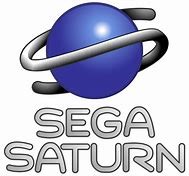
Saturn (Dan)
Exotic. If there was one word that I would use to sum up the Saturn, it would be that. Exotic, foreign, unknowable. Even its name is other worldly, a seemingly space age moniker.
After years of experimenting with add-ons designed to augment their successful Mega Drive system, the Saturn was to be Sega’s true 32-bit successor, the machine to take them into the next generation. Despite many tales to the contrary, the Saturn was designed to be a multi-processor system from the off, the SH2 processors chosen for their efficiency. However, it was the second VDP chip that would be added later to better compete with the 3D capabilities of the PlayStation at the time. Even in its infrastructure Sega dared to be different.
Unfortunately, we know how the story goes, as the eccentricities of the Saturn’s internal architecture proved to be too complicated for many developers, while the ease of PSX development meant Saturn ports of some 3D 3rd party titles took longer to develop, were inferior to their PS1 counterparts or didn’t arrive at all.
But here’s the thing. In the right hands, the Saturn could sing, and I mean really sing. There are games today that hold up better than their counterparts on other consoles in the era. 2D games, while scoffed at when polygonal gaming was to be the future, are outstanding on the system, which given the appreciation for such titles today, puts the Saturn top of the heap when it comes to those experiences.
And that’s not to say it couldn’t do 3D. Particularly in its later life it turned in polygonal performances and trickery that many thought was impossible on the system while, as James rightly says, turning in ports of arcade games it had no right to do.
The Saturn was a hit in Japan, trouncing the N64 and even beating out the PlayStation in its first year before eventually being overwhelmed by the latter. Its lack of similar success in the West meaning some titles never made their way over from the land of the rising sun.
And that is the Saturn in a nutshell. As a kid it took years for me to save up enough to get one, it felt too high tech, too futuristic to be real. When that day finally came I was utterly blown away, but soon the Japanese library again displayed greatness that was just beyond the standard owners reach.
Today there are an embarrassment of riches in its game library, and while a few have slowly seen ports or remasters onto other systems, the vast majority have not, the obvious explanation being the titles that made the most of Sega’s unorthodox hardware configuration are likely the most difficult to transfer to another system.
And those that remain exclusive to the Saturn tend to fetch outrageous prices on the second-hand market. Once again, the true flavour of the Saturn is just out of reach for most.
Exotic before, during, after and forever.
It is on the Saturn that I feel the personality of Sega, that spirit that we revere, really came to the fore. The excited announcers present in their arcade games, the unwavering quality of those Sega soundtracks, that gameplay that you could pick up, and play and that just felt right, those bold coloured graphics, and of course those blue, blue skies.
I love the Dreamcast. Sega’s great white hope had me absolutely giddy in its early years and like its predecessor it is home to some absolute classics that still stand up today. Like James I imported mine as I simply couldn’t wait for the PAL release.
But when it comes to games, I feel the Saturn was more where Sega’s cultural identity was at its zenith and Sega themselves were most creative. The Dreamcast in terms of software, felt slightly safer, with obvious exceptions. This was much needed after the Saturn’s commercial failure, and in its own way helped the Dreamcast give birth to plethora of classics that easily rivals the Saturn. With all that aside, the Saturn benefits from being there at the birth of mainstream 3D gaming, where many norms and structures had already been standardised when the Dreamcast came to market, though that Sega continued to innovate on the Dreamcast really is a testament to their prowess.
For me it is the Saturn then, that I feel is most representative of the Sega we all adore, the brash, colourful, adventurous software that adorned it. Innovative, approachable, warm and exotic.
The Evidence
To support their arguments, James and Dan each pick 5 games from their system of choice that they feel represents that Sega spirit at its most innovative, most flamboyant and most representative of that signature aura of their favourite platform holder.
Before we begin, there are rules in place. In the interest of fair and balanced writing, the five examples are chosen from games James and Dan have physically owned and played.
Many people will see this piece and expect, for example, Seaman to be in here. However we can’t provide a realistic and compelling argument if we’ve never played the game!
Furthermore, this isn’t the “best of”, rather the point is to evidence Sega at the peak of their cultural identity.
Let’s begin!
The Dreamcast
Shenmue
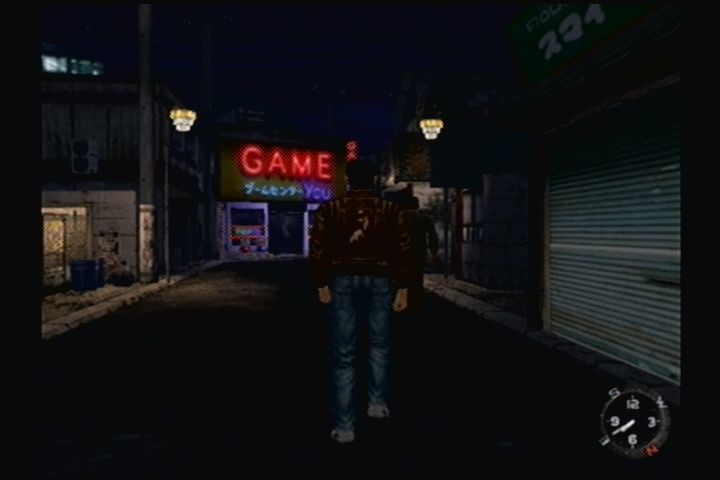
Yu Suzuki dared to dream that he could recreate a living, breathing, fully interactive world within the confines of a video game. Starting life on the Saturn, but soon outstripping the capabilities of the hardware, Shenmue was moved to the Dreamcast and brought to life with visuals and character models on par with those found on Model 3 arcade hardware.
And while many argue that the game has not withstood the test of time, you really had to be there when this launched to fully appreciate it. I remember when I saw that opening sequence for the first time, as Ryo comes home to find Lan Di confront his father for the Phoenix Mirror.
I don’t think my jaw left the floor for the rest of the day, it was like nothing I’d ever seen before on a home console; facial animations, eyes that moved and scanned the scene, flowing hair, and clothing that waved in tandem with the characters movements.
However the visuals alone aren’t what made Shenmue revolutionary. The star of the show was the world itself, and it is gorgeous. Want to go into that shop or bar? You can. Need to kill some time? Why not play Hang On or Space Harrier in the local arcade? Need some information (let the sailor jokes begin), why not speak to that old lady randomly walking toward you?
In fact, Shenmue’s world was so alive, and that’s the key word here, that you found yourself immersed in a way no game had achieved before.
The gameplay itself is a collective of genres. You had the first true open world, infused with RPG elements such as exploration and investigation yet mixed with a free roam combat system that leaned heavily on Suzuki’s other labour of love, Virtua Fighter.
For me, Shenmue remains the single greatest technical achievement on Dreamcast and I’d go as far as to say it’s the physical embodiment of the Dreamcast’s soul.
Jet Set Radio
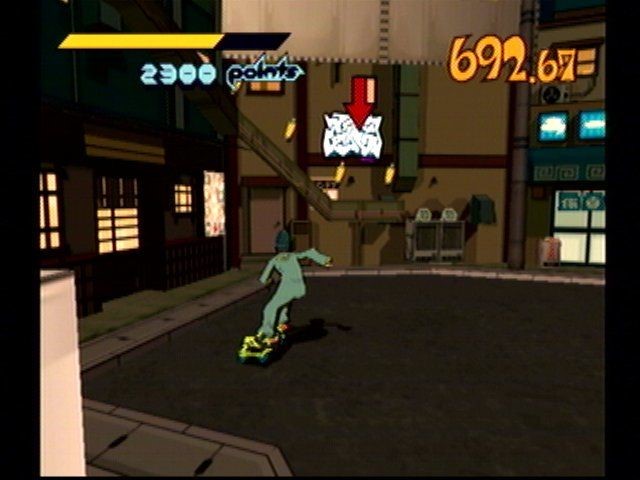
Cell shading. Who’d ever heard of that term prior to Jet Set Radio?
If Shenmue is the Dreamcast’s soul then Jet Set Radio is it’s attitude; bright, bold, loud, brash, and colourful. A third person “graffiti simulator”, for lack of a better term, JSR put you in control of the GG’s, a gang based in the fictional city of Tokyo-to.
The gameplay premise seems simple enough. Find the graffiti tags by rival gangs and spray over them with your own gang sign, but the challenge comes in a) ensuring you have enough spray paint and b) avoiding the growing list of enemies who want to stop the GG’s doing their thing.
The more you tag, the greater the risk and straight from the off you are faced with Captain Onishima of the Toyko-to police force who will think nothing of it of chasing you personally with a giant hand gun and laying waste to your character. As you progress further you face challenges from police officers, riot police, tear gas, and even tanks … just for spraying some graffiti!
The soundtrack that accompanies the visuals stem from industrial hip hop merged with pop elements, and it suits the game down to the ground. However, it’s no secret that the title song from the sequel, Jet Set Radio Future (Xbox) has transcended the years as fans still demand that SEGA “understand the concept of love” and being back JSR.
Some lament the controls as being “too tight” and this is one game that could absolutely have benefited from a second analogue stick on the Dreamcast controller, but get to grips with the controls and you’ll enjoy one of the most unique and rewarding experiences in retro gaming. Trust me, you’ll power off your Dreamcast with a smile on your face and a hint of frustration but you’ll still come back for more.
This was a game that literally looked and sounded like nothing you’d played before and represents a degree of creative freedom from SEGA that goes against the grain of the “mainstream” approach many argue SEGA wanted for the Dreamcast.
Sonic Adventure
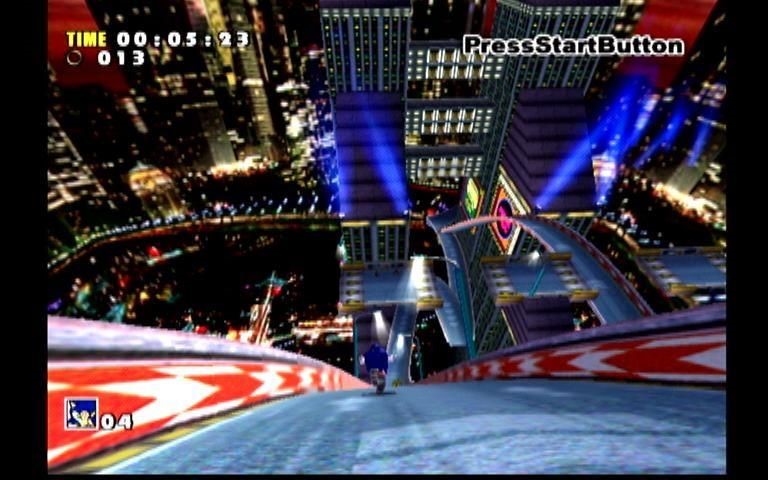
If there’s one thing the Saturn lacked during its lifespan, it was a proper Sonic title.
SEGA had planned to bring their mascot to their 32-bit system via the ill-fated Sonic X-Treme, which started life as a side scrolling Mega Drive follow up to Sonic and Knuckles before being moved to the Saturn in an attempt to transition the gameplay to 3D.
The title was even shown off at e3 in 1996, however Sonic fans would need to settle for the likes of Sonic Jam (a collection of all the 2D Sonic games bundled alongside a playable 3D world with a museum and other mini games) and the Mario Kart inspired Sonic R, as internal politics (at SEGA? Never?!) would see Sonic X-Treme languish in a never ending development cycle and be subsequently canned.
Sonic Adventure, released in December 1998 in Japan after missing the launch window, would finally bring Sonic into the world of 3D and, some camera issues aside, it remains a glorious experience even today. If any Dreamcast game captures the “Blue Sky” SEGA feeling, it’s this one.
However being in 3D wasn’t the only difference between Adventure and any previous Sonic game.
There’s an entire roster of characters from Sonic, Tails, and Knuckles to Amy, E-102 (one of Robotnik’s robots who becomes sentient) and Big The Cat.
The game features vast, colourful 3D worlds with branching storylines for each character which intertwine as you play through them, and even allows you to save a Tamagotchi style virtual pet, called a Chao, to your VMU to play away from your console.
Sonic Adventure can and often does split opinion, with some saying it doesn’t feel like a “true” Sonic game while others say it took Sonic to levels that have never been matched since (in the 3D space).
You have to applaud Sonic Team for what they delivered, as for the first time Sonic felt truly fleshed out; his attitude, his humour and for the first time his voice.
It’s little wonder that Sonic Adventure is the best selling game on Dreamcast with 2.5 million copies sold; that’s over a quarter of the final install base of 9.13m!
Rez
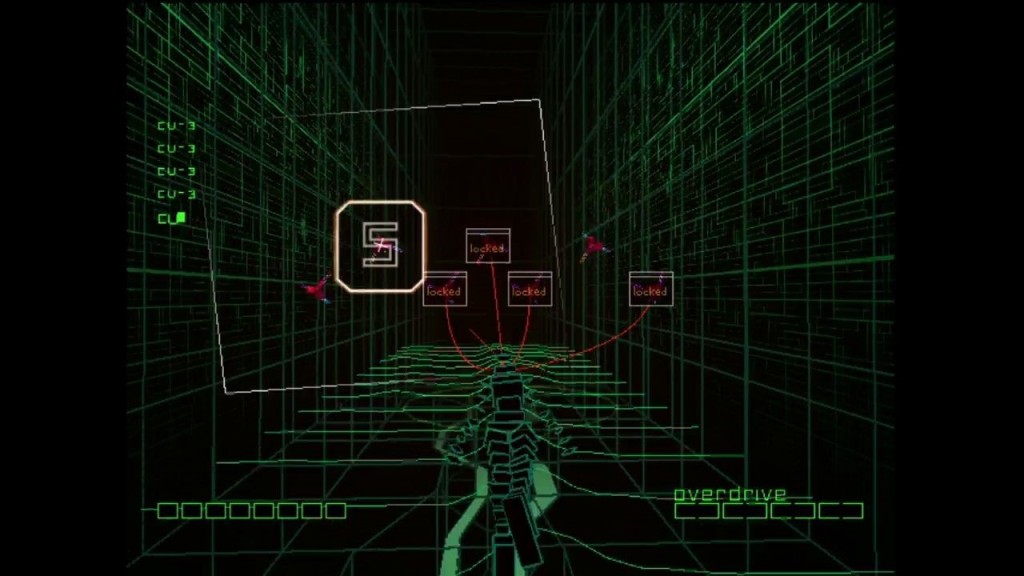
Part shooter, part music synthesiser, Rez is an experience like no other. The game, created by SEGA subsidiary United Game Artists and published the SEGA themselves, you fight your way through a wire frame world taking control of a floating/flying humanoid figure.
The games shooting mechanics lean heavily on the “lock on” style found in SEGA’s Saturn serious, Panzer Dragoon.
Single shots could be released with a single press of the shoot button, while holding the shoot button in and moving the on screen crosshair over multiple enemies resulted in a synthesis of noise and light.
The levels start with a basic beat line, which speeds up as the missions progress. The more you shoot, the more music is added to the beat, and by the time you meet the end of level boss, you are treated to a wall of trance music, accompanied by a light show that would make Tiesto jealous.
It is truly a game you need to play at least once in your life and one which goes for insane prices now in the second hand market, especially sealed.
Trust me, if you haven’t played it, you have to do so and I think if you do you’ll appreciate that, along with Jet Set Radio, it represents a level of developmental risk not seen by SEGA on any of their prior platforms.
Soul Calibur
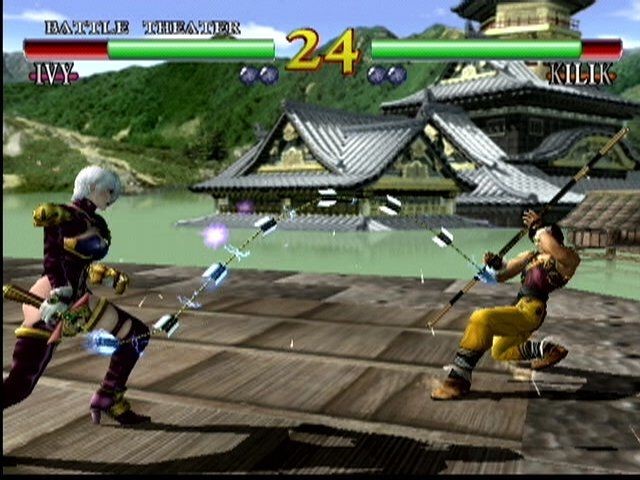
Ok, so hear me out. Yes, it’s a Namco game BUT until it was ported to Xbox Live Arcade, the Dreamcast was the only console you could play this game on and my reason for including it in this list is because SEGA’s hardware gave Namco a platform on which to shine. Soul Calibur was the first home arcade port that was BETTER than the original in every single possible way.
While Sony has enjoyed everything Namco had to offer on the PlayStation, from Tekken to Ridge Racer to Time Crisis, it was the weapon based fighting game Soul Edge (Soul Blade in the UK) that would see its sequel depart Sony hardware.
And what a departure it was. Enhanced visuals beyond anything you’d seen in the home in a fighting game. Mitsurugi’s katana blade sparked as he parried attacks, Lizardman’s individual scales were discernible with the naked eye and the fur on Rock’s head dress was defined and detailed.
In fact, so good is Soul Calibur that it still looks incredible today, and has stood the test of time insanely well.
Yet, visuals alone aren’t what male Soul Calibur stand out.
The level of depth to the game is superb, supplementing the typical arcade and vs modes with a mission mode, aka a story mode, which takes your character across the games world fighting various opponents under different challenging circumstances.
The game has come to Xbox Live Arcade in the years that followed, but in the most basic of forms thus dropping the mission mode entirely. This means that 20 years on, the Dreamcast remains the definitive place to play the definitive version of the first arcade beat em up to come to the home superior to its arcade parent.
The Saturn
Panzer Dragoon
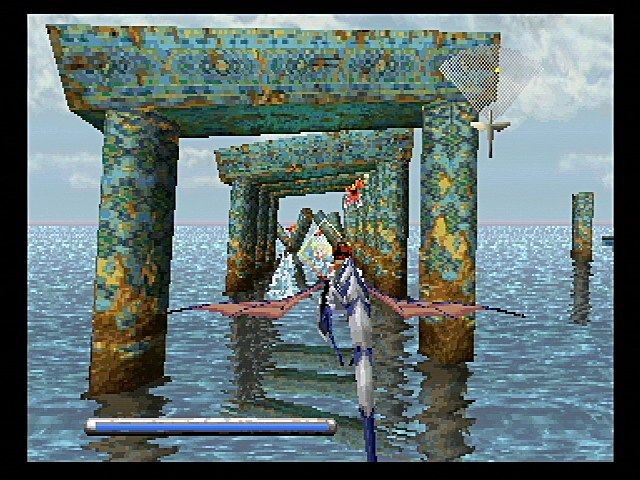
Amongst the PS1 and Saturn lunch line-ups which largely consisted of arcade conversions, sports games and platformers, Panzer Dragoon was this game that dared to be different and stood out from the crowd. It may have been a rail shooter, but the main innovation that lay in the ability to rotate your aim 360° around your dragon was invigorating, and to this day is unlike anything on the market. Furthermore, its divine refinement of lock on and fire mechanics inspired many similar games to borrow this mechanic after, with Star Fox 64 (aka Lylat Wars) being one of the most notable.
It would have been easy to ride on the coat tails of previous successes with a more mainstream approach, like a Galaxy Force or After Burner follow up in a similar polygonal vein as Star Fox which had debuted just over a year before, but such was Sega in this era, they dared to be different.
There was certainly a change of pace compared to similar games that came before, the beautifully animated dragons slower, more deliberate flight speed helped make the game stand out in a in a genre that hadn’t felt so otherworldly since Space Harrier.
What endures today is that art design, the loneliness of a ruined world is perfectly delivered by impeccable sound and visuals. Yet this post-apocalyptic world still felt distinctively Sega; bold brash, colourful.
It’s telling that 25 years later there is still very little like it, neither its unique rail shooter mechanics or even its graphical design has never been accurately replicated, with the recent remake almost looking like a different game entirely.
Dragon Force
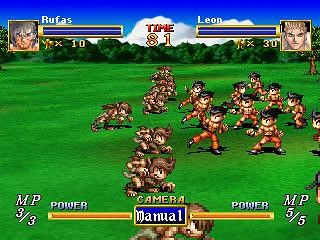
A game that defies convention and for which, to this day, has no real alternative, Dragon Force sees you choose from 8 kingdoms and vie to conquer the continent. A mix of tactical RPG and RTS, you would amass armies and kingdoms as you played your way through your character specific arc.
With armies of up to a hundred sprites each battling it out on a side on 3D plain, the game is a visual spectacle and a testament to the Saturn’s 2D prowess. Of course, despite being a war game with a deep and often sombre narrative, that distinctive Sega look and feel is there, with rich, bright colours which are a joy to behold.
There’s a unique grandness to everything about it from the scenario to the sound design. But that it looks and sounds and plays amazing isn’t really the point, the point is that this is a fantastically novel approach to the melding of two genres and creating something that still feels fresh, original and different.
You have to appreciate the sheer audacity of Sega’s internal team at the time to shove 202 sprites (that includes the generals) onto a battlefield and build not one, but eight epic storylines around it. It’s a shame we haven’t seen anything quite like it since.
Guardian Heroes

The melding of multiple genres would continue with Treasures Guardian Heroes. Take a scrolling beat ‘em up, mix with 1 on 1 fighting mechanics, add an RPG style progression system and a multiple route selection and you’ve got yet another Sega game that takes an existing genre in hitherto unseen directions.
Though Treasure were a third party developer, Sega’s name appears on this and the Xbox 360 port of the game, and as the primary publisher it was they that greenlit, funded and assisted development, even if it was only to a small degree.
Treasure were synonymous with the Mega Drive, games like Gunstar Heroes and Dynamite Headdy brought with them a distinctive style. To that end, as well as being a revolutionary title for the genre, Guardian Heroes feels like the perfect evolution of the kind of game you would see in the Mega Drive era, a game that looks, feels and sounds just so unquestionably Sega.
The game has an embarrassing amount of content, from the sprawling campaign for one or two players, which splits into innumerable paths with several different endings, to the six player arena mode where you and your friends can choose from over 40 (mostly unlockable) characters and pummel each other until only one is left standing.
Again, there is little else like it out there, and while some games have provided a similar RPG/Beat-em-up style fusion (Castle Crashers) or multiplayer arena fighting (Smash Bros), none have pulled off both in the same package quite like Sega and Treasures effort. Even the Xbox 360 release somehow muted the colours slightly and didn’t have quite the same feel of a game that feels right at home on the Saturn.
Virtual On
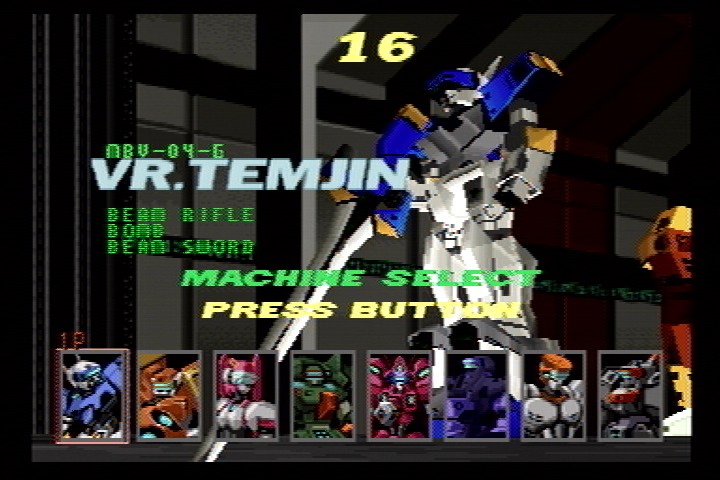
It would be remiss of me not to include a Sega arcade port, while Virtua Fighter and Virtua Racing were trailblazers of the 3D space, they were 3D variations on established themes, even Virtua Fighter borrowed heavily from other games in the genre at the time. Just as importantly these Model 1 games were released before the Saturn debuted and their ports and follow ups were more iterative in nature.
Enter Virtual On. A one-on-one mech fighter unlike any other. While it could have been easy to transpose these characters into a traditional fighting template a la Cyberbots (which is still a phenomenal game), AM1 gave us a twin stick arena battler that was as fast and furious as it was beautiful and innovative.
Given the arcade action and the scope of the gameplay, the Saturn should not have been able to produce a serviceable port at all, yet not only did it manage to house an outstanding conversion, it added two player split screen options too.
But again I’m getting ahead of myself. This is another Sega game that defies classification, it’s not a mech shooter and it’s not a 1 on 1 fighter. It used a pioneering control scheme never seen elsewhere that works wonderfully, and its unique controller made the arcade experience a reality on Saturn. Sure, its sequels made their way to later platforms, including the sumptuous Oratorio Tangram on Dreamcast, but this first entry was the one that broke the mould, that amongst a sea of Street Fighters, Virtua Fighters, Tekkens and Mortal Kombats, looked at Mech Warrior and the Earthseige series, and did something radically different.
And that look, sound and feel? Pure Sega! The track on the first stage couldn’t be more Sega if it tried, it’s called “Into the Blue Sky” for crying out loud!
Nights Into Dreams
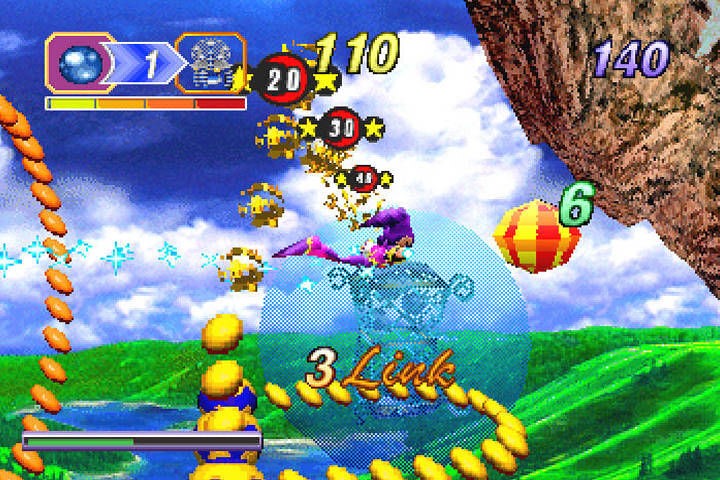
To me this game is Sega personified. A dream like world, an azure sky, colourful, sumptuous and scored against a soundtrack that is catchy, complimentary to the in-game action and that is also suitably grand.
My chief frustration with one of my favourite games of all time is trying to explain what it is to the uninitiated. It’s different for certain and too often incorrectly described as a platform game. At its base level, this is an arcade experience, as its multiple references to courses and its ultimate focus on score attacking.
Nearly 25 years later I’m still trying to beat high scores, master the link bonuses, and I still can’t one-shot Gillwing for the double multiplier with complete certainty. That is the true beauty of a game that has more in common with Pac-man Championship Edition than Mario 64.
But it’s also an adventure too. Its minimalist approach to story telling is the perfect approach given its dream laden narrative, something its sequel got horribly wrong.
The journey of two children and a dream jester is so chock full of imagination that it has never been replicated elsewhere. The dreamworld setting allowed for Yuji Naka to throw caution to the wind and craft exquisite levels unbound by any convention. This was Sega at its creative zenith, with Sonic Team demonstrating with bravado that they weren’t tied to the blue hedgehog, and that Sega weren’t defined by him either. It’s this spirit that defines Sega, and nowhere is that more prevalent than in Nights.
The conclusion
Pitting these two fierce underdogs against one-another was always going to lead to a tightly fought contest.
The great tragedy is that both the Saturn and Dreamcast are considered failures based purely on their commercial performance, yet even with just five examples per system it’s abundantly clear that the Sega of those generations had a knack for showering these two consoles with games that were not only of an exceptionally high quality, but rewrote the rule book on in many ways, crafting experiences which either paved the way for future generations or for which there is no real equivalent.
It cannot be denied that the open world genre owes a great debt Shenmue for taking the giant leaps games of that kind required to become a reality, whilst there’s still nothing quite like Rez, Dragon Force or Nights into Dreams.
And it must be reiterated that these are but a handful of games, selected under tight criteria and still painstakingly drawn from two of the most unique and diverse libraries in gaming.
The Sega of 1994 to 2002 never stopped being that braggadocious arcade titan of the 80’s, the one with state-of-the-art hardware, where superbikes, Ferraris and F14 Tomcats hurtled towards an azure capped horizon in a cavalcade of colour. In this early 3D polygonal era, Sega were at the frontier, their swagger was instead personified by how their rock star developers would find all manner of innovative and unique game concept greenlit, such was Sega’s trust in them.
Such an approach produced Nights into Dreams and Shenmue, two games so revolutionary yet expensive to develop you couldn’t imagine a publisher having the gall to back them today. It may not have yielded commercial success, but it did forge an identity for Sega, one which you couldn’t help but adore once you’d allowed yourself to become entranced by their works.
But which console reflected Sega at their most creative, most whimsy, most innovative and most extraordinarily unique? Which console personifies Sega best, which system is a personification of two martial artists in a supercar under a blue sky sound tracked to an explosive Jun Senoue guitar solo?
Firstly, make sure you listen to the podcast for the full story.